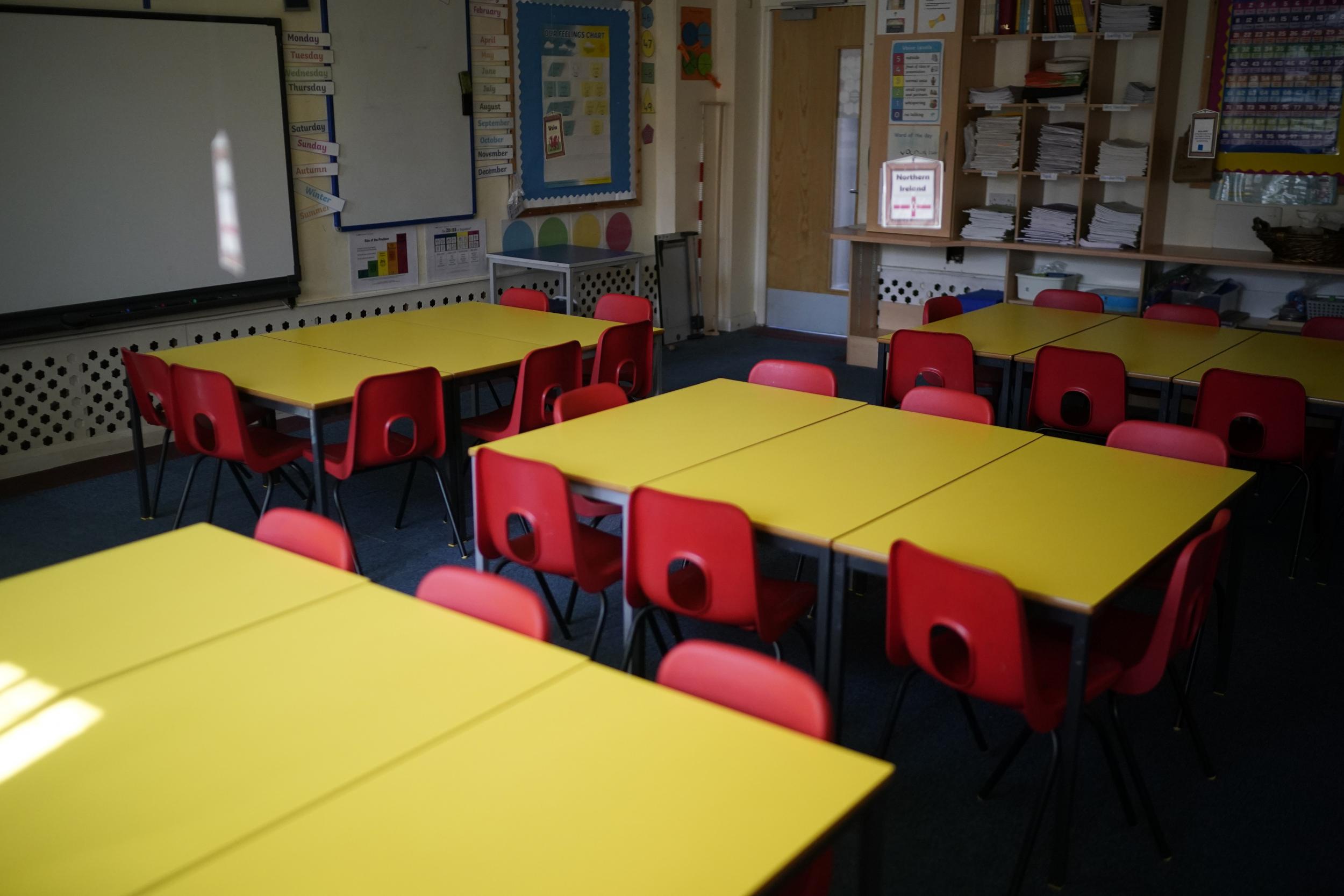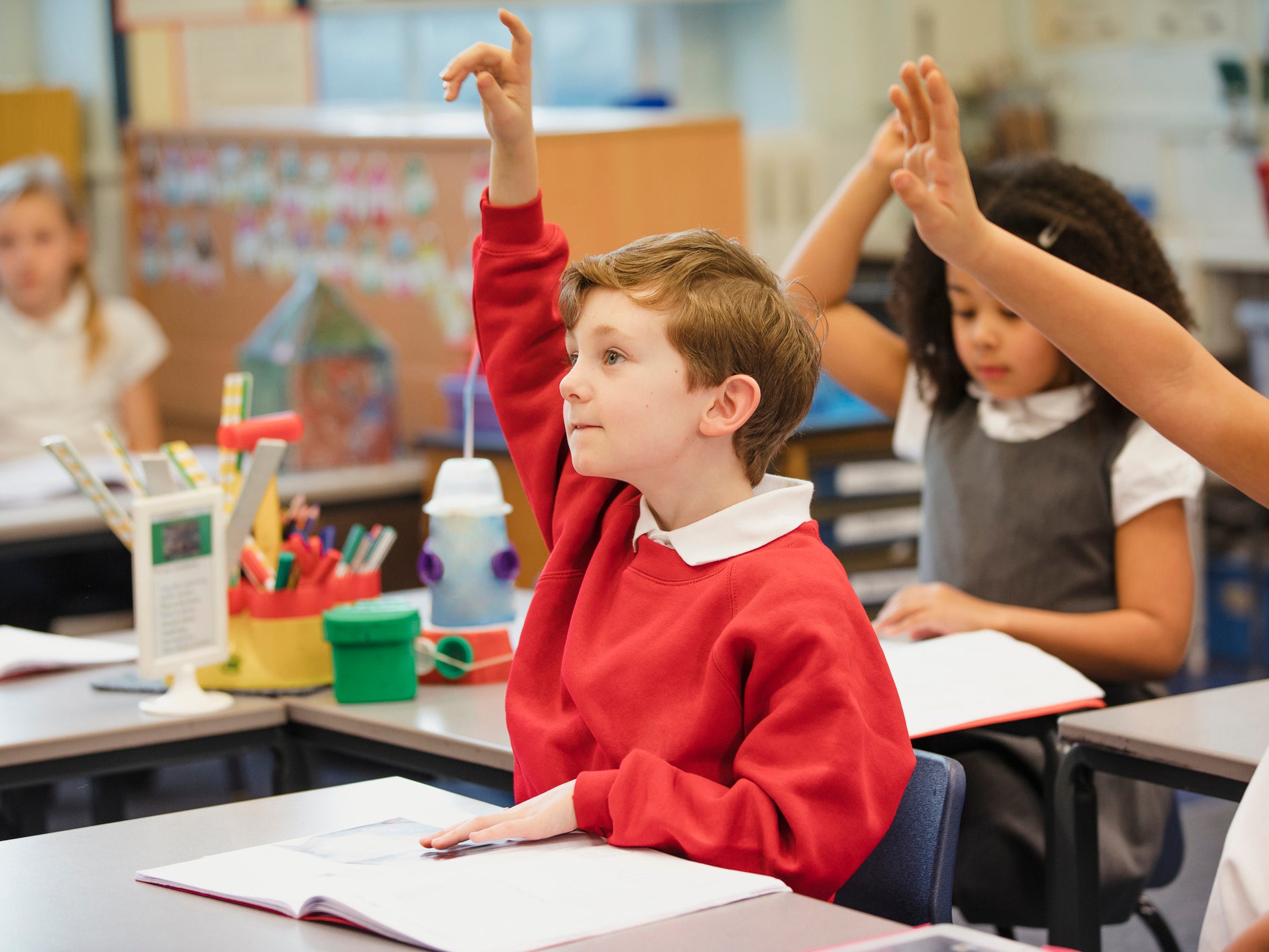Is it safe to reopen schools?
Putting children back in class has been suggested as one of the first lockdown measures to be relaxed. But experts tell Jon Stone it still isn't clear to what extent pupils could spread coronavirus


Your support helps us to tell the story
From reproductive rights to climate change to Big Tech, The Independent is on the ground when the story is developing. Whether it's investigating the financials of Elon Musk's pro-Trump PAC or producing our latest documentary, 'The A Word', which shines a light on the American women fighting for reproductive rights, we know how important it is to parse out the facts from the messaging.
At such a critical moment in US history, we need reporters on the ground. Your donation allows us to keep sending journalists to speak to both sides of the story.
The Independent is trusted by Americans across the entire political spectrum. And unlike many other quality news outlets, we choose not to lock Americans out of our reporting and analysis with paywalls. We believe quality journalism should be available to everyone, paid for by those who can afford it.
Your support makes all the difference.The government is showing no sign of easing its coronavirus lockdown restrictions, with another extension to the measures confirmed on Thursday. But the education secretary, Gavin Williamson, is reported to have privately made clear that if it were up to him, schools would be reopening at the first safe opportunity.
The issue is contentious: the science of to what extent children contribute to the pandemic, and by how much, is uncertain. Childcare is becoming an issue for many parents who are not key workers and thus entitled to still send their children to class. And with what started as an extended Easter holiday is in danger of turning into several months off school, pupils are starting to miss out on serious amounts of education.
“I suspect we might open schools again, partly because there is still debate about whether school closures are actually beneficial or not,” Paul Hunter, professor in medicine at the University of East Anglia tells The Independent.
“We’ve not answered that, and there are very good reasons why school closures, in terms of the children, might actually not be that useful. And if they don’t get that ill, maybe they’re not that infectious – but it is a maybe.”
This uncertainty is key to the question of how long this extended Easter break might turn out to be, and whether it starts to turn into a summer holiday before children go back to class.
Dr Mike Tildesley, an expert in disease modelling at the University of Warwick, tells The Independent that even if children are less effective vectors for the virus, the fact that so many of them would be crowded into schools could pose a risk.
“The problem is there’s still an awful lot of uncertainty, and this is the real concern we have,” he says. “We know from the data coming in that children tend to have much more mild symptoms than the older age groups. Where there is still a lot of uncertainty is how much they transmit and this is a big concern.”
Children themselves might not be getting sick, but could still be acting as carriers for the disease.
“Even if someone is asymptomatic and has no symptoms at all it’s still possible they can transmit the virus. If someone has very clear symptoms and is coughing a lot they’re much more likely to transmit and spread droplets, so it’s very likely that people with very severe symptoms will have a higher transmission rate,” says Dr Tildesley.
“But what we don’t know and what’s still uncertain is the role of these asymptomatic or mild cases in infection. This is the concern because of course even if that’s lower the fact that you’ve got a lot of children in one place is a concern.”
With repeated government promises to ramp up Covid-19 testing falling short, there is very little data around about the extent to which people – never mind children – are even being asymptotically infected. Until that bottleneck is sorted, it will be hard to judge exactly how many people are carrying the virus. But with seriously ill people and NHS workers being prioritised for the limited number of tests, people with no symptoms are a long way down the list.
The manner in which the lockdown was implemented is also a problem, as it becomes difficult to separate out the different measures and tell which ones are making a difference.
“We don’t know the relative effects of these [measures]. It may be that school children are playing a minor role in that and that in allowing children to go back to school we will be able to keep it under control, but it’s very difficult at this stage to be able to say that with a high level of confidence,” Dr Tildseley says.
It may be that if you allow children back to school and we see cases climbing again it may be that schools have to be closed once again.
“It may be that if you allow children back to school and we see cases climbing again it may be that schools have to be closed once again.”
At this point, any decision to reopen schools, even if it was based on the available scientific evidence, would be a guess – because there isn’t much scientific evidence yet available. But many teachers are worried about being flung into the classroom as an experiment when the science is not yet clear.
Patrick Roach, general secretary of the NASUWT teaching union tells The Independent it would be reckless to put “political or business” considerations ahead of safety.
“Everyone is anxious to return to normality as soon as possible, but decisions to either strengthen or loosen the current restrictions must always be governed by the medical and scientific evidence. Political or business considerations must never be allowed to override the safety of pupils, school staff and the wider community,” he says.
“The NASUWT is committed to work with the government to protect public health and the health of our members who, along with other public service workers, are doing so much to help the country through this crisis.”
One option being recommended by some epidemiologists is bringing schools back, but with specific social distancing measures to prevent the spread of the virus: setting desks further apart, closing playgrounds, asking children to keep their distance. Teachers could also be given protective equipment (PPE): another union, the National Education Union (NEU) has written to the prime minister asking him to base any decision to reopen partly on the “availability of appropriate PPE and enhanced levels of cleaning”.
One study published in The Lancet medical journal, which looks at data from the 2003 Sars outbreak in China, suggests schools could come back earlier if students could be prevented from mixing and have social-distancing measures imposed during class.

“Interventions in schools, such as closing playgrounds, keeping students in constant class groups/classrooms; increasing spacing between students in classes, reducing the school week and staggering school start and break times across years or classes, should be considered if restrictive social-distancing policies are to be implemented for long periods of time,” said Professor Russell Viner, one of the authors of the study.
In Denmark, schools this week started to reopen in a staggered manner, with different arrival times and just the first five year groups plus kindergartens back for now. The youngest children are going back first because they are thought to be the least vulnerable to the virus and also the most difficult to arrange childcare for, keeping workers tied up looking after their families.
But if the UK’s 506,400 full-time teachers are to be given protective equipment, the UK’s supply lines, already insufficient for NHS staff and care workers, are a long way off from being able to cope. And teachers say that there are other practical issues to consider.
Katharine Birbalsingh, the high-profile headteacher of Michaela Community School in Brent, north London, has said it was a “lie” that social distancing is possible in schools.
“The fact is that social distancing in schools is simply impossible,” she said. “We’re considered to be the strictest school in Britain and even we would find it impossible.”
506,400
Number of full-time teachers working in the UK
Ms Birbalsingh said she understood that “schools cannot stay closed for 10 months”, and that they might have to open eventually, but said the government should be upfront with teachers and the public about the risks.
“Schools will open at some point, but what I don’t want is for people to perpetuate the lie – and it is a lie – that social distancing is possible. It just isn’t,” she said.
Staffing would also be an issue, the headteacher told the BBC, with supply teachers not an adequate replacement on such a grand scale.
“The other thing to remember is that from the point of view of a head teacher, if you have to send home staff who have underlying issues, if you have to send home your staff who have a cough you are probably going to have fewer than half your staff in. So if you have half your staff in, how are you filling your classrooms with teachers? You can’t.
“And you’ve got to think about the kind of chaos that then ensues in schools when children don’t have their own teachers – you have cover teachers, and we all know what you used to do in schools when you had a supply teacher.”
Dr Tildesley also notes the problems, telling The Independent: “Possibly for secondary school children it’s easier to implement a policy like that; for primary school, that’s a challenge – I’ve got two six year olds, trying to explain to them the concept of going back to school but not hugging their friends is a real challenge. I think that’s difficult.”
Political or business considerations must never be allowed to override the safety of pupils, school staff and the wider community
Despite these concerns, other countries in addition to Denmark are going ahead with reopening schools anyway. Germany announced on Wednesday that it would start opening schools early next month, and Austria and France have also set tentative timetables.
Given the lack of clear information, this, says Dr Tildesley, could be “useful” for the UK authorities in deciding which way to go.
“We are seeing other countries in Europe who have declared that they are going to start sending children back to school earlier than us. That will also give us some evidence,” he says.
“It would be really informative to use to look at their epidemic curves and how they might change when children start to go back to school. Of course, every country is different but it would at least give us some evidence of what that effect might be.”
But, he adds, evidence would take several weeks to filter through, given the virus’s incubation period – and if schools reopen at the same time as other measures are lifted it would be harder to disentangle the effect. It is for this reason that the European Commission has asked countries to leave gaps of weeks between phasing out different measures stating that “sufficient time should be left between the steps (eg one month), as the effect of their lifting can only be measured over time”. Whether member states, under domestic political pressure of their own, adhere to this will remain to be seen.
“There is going to be something of a lag in that and two, three weeks really before we start to see strong evidence of what the effectiveness of that policy is,” Dr Tildesley said.
“This is the challenge with any kind of exit strategy for lockdown: because we can’t tease out all these relative effects, we can do something but then we’re not going to see immediate effects of that. It’s taken three weeks [since the lockdown was introduced], really only at this stage we’re only seeing early signs that the curve is flattening. It’s taking really long to see strong evidence that this is working.”
If the government makes the leap to opening schools any time soon, it will be somewhat of an experiment.
A spokesperson for the Department for Education said: “Schools will remain closed until further notice, except for children of critical workers and the most vulnerable children and we have published guidance on how schools can employ social distancing during this period. We will only re-open schools when the scientific advice indicates it is safe to do so, and will consult closely with the sector on our approach.”
“There’s always a trade off here,” says Dr Tildseley. “I accept this as an infectious disease modeller, we tend to be very focused on trying to minimise the risk to human health of the virus, but of course there is another aspect of this and it’s something I’m aware of: you can’t stay in a lockdown strategy forever.
“If all we cared about was minimising deaths then essentially you would persist with lockdown. But there’s a practical side to it. At some point you’ve got to start to visit measures for lifting.
“This becomes a really difficult political decision because you have the problem of if you open them and it’s deemed to be too soon and cases begin to climb again, you could start to lose public trust.”
Join our commenting forum
Join thought-provoking conversations, follow other Independent readers and see their replies
Comments